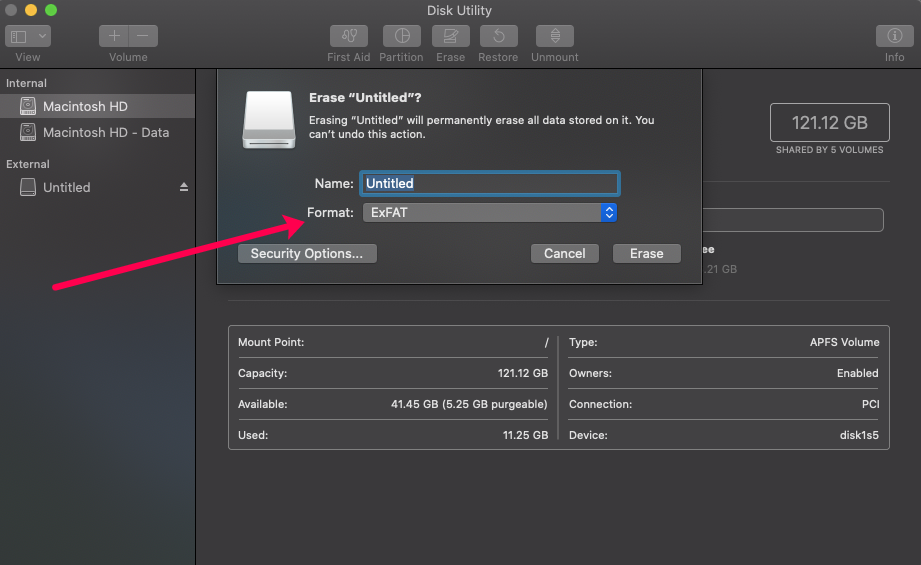

- Format a usb for mac & pc compatibility 2017 how to#
- Format a usb for mac & pc compatibility 2017 mac os x#
- Format a usb for mac & pc compatibility 2017 mac os#
- Format a usb for mac & pc compatibility 2017 update#
- Format a usb for mac & pc compatibility 2017 professional#
On the other hand, image submission on different websites is a professional way to explore your product’s visibility and image submission sites also give back high-quality do-follow backlinks.
Type “Name” for the drive, then select “Format” (file system).Īfter formatting is complete, the USB flash drive is ready to be used to store documents, pictures, videos, and other files on the removable drive.įurther, this is a good technique to create profiles at high pr profile creation sites to express your services. Select the USB drive from the list on the left. Launch “Disk Utility” (from Applications > Utilities > Disk Utility). Insert the USB drive into your USB port. Under the “Format options” section, select the Quick format option or not depending on the usage. In the “Volume label” field, confirm the name of the drive that will appear in File Explorer. In the “Allocation unit size” drop-down menu, select the default option.  Use the “File system” drop-down menu and select the desired option. Under the “Devices and drives” section, right-click on the flash drive and select the Format option.
Use the “File system” drop-down menu and select the desired option. Under the “Devices and drives” section, right-click on the flash drive and select the Format option. 
For everyday Windows and Mac OS users, another option is to create a partition on the hard drive and split the formatted drive for each OS. There are several tools available for using NTFS on a Mac (Fuse) or HFS on a PC (HFSExplorer). Windows cannot detect this file system without third-party utilities. Select this option only if your drive will be used in Mac OS. Mac OS Extended is the original solution for Mac users and has the maximum file size of the other file systems above.
This system has a larger max file size but can only be read on Mac OS X (unless you install a third-party NTFS read/write utility). The NTFS format is Windows’ favorite file system used by default for system operation by internal drives or used as secondary storage drives.
Older operating systems may require an update to properly read and write on USB drives with the exFAT file system. This system has no file size limit of 4GB and is compatible with most Windows and Mac operating systems.
exFAT is the ideal file system for USB flash drives. FAT32 is the most compatible file system for old/modern computers (PC and Mac), game consoles, and devices with USB ports. Most USB flash drives have an existing FAT32 file system. FAT32 is a common choice that is familiar to you because it is recognized by both Mac and Windows operating systems, has a file capacity of 4 GB, but lacks security. The most commonly used file systems in USB flash drives: When formatting your drive, it is important to understand the different formatting options available for appropriate use. This action may take a long time, depending on the capacity of the drive File system options This method is not the safest way to delete your files because the data may still be recovered with a data recovery tool.įull format: Bad sectors will be scanned and write zeros in all sectors, which means permanently erasing all data. This option is often used so that a USB flash drive can efficiently free up available space for moving or storing other files. Quick format: Delete the file system table and root folder. There are two types of formatting on USB drives: Formatting a drive is usually done when you are about to use a new operating system or need additional space. This process results in a filing system that manages data and allows you to maximize storage space for your files. What is Formatting?įormatting is the process of preparing storage devices such as hard drives, solid-state drives, flash drives, and others to store information. This article describes how to format your drive on Windows and Mac OS 10+. If you’ve ever come across a flash drive that works on a PC but doesn’t work on a Mac or vice versa, it’s usually caused by formatting the drive. However, sometimes you may need to erase all the data on your drive or make the drive compatible with different types of computers that was originally set up. Most computer users don’t think about formatting their USB flash drives, as most drives are also pre-formatted and ready to go.







 0 kommentar(er)
0 kommentar(er)
